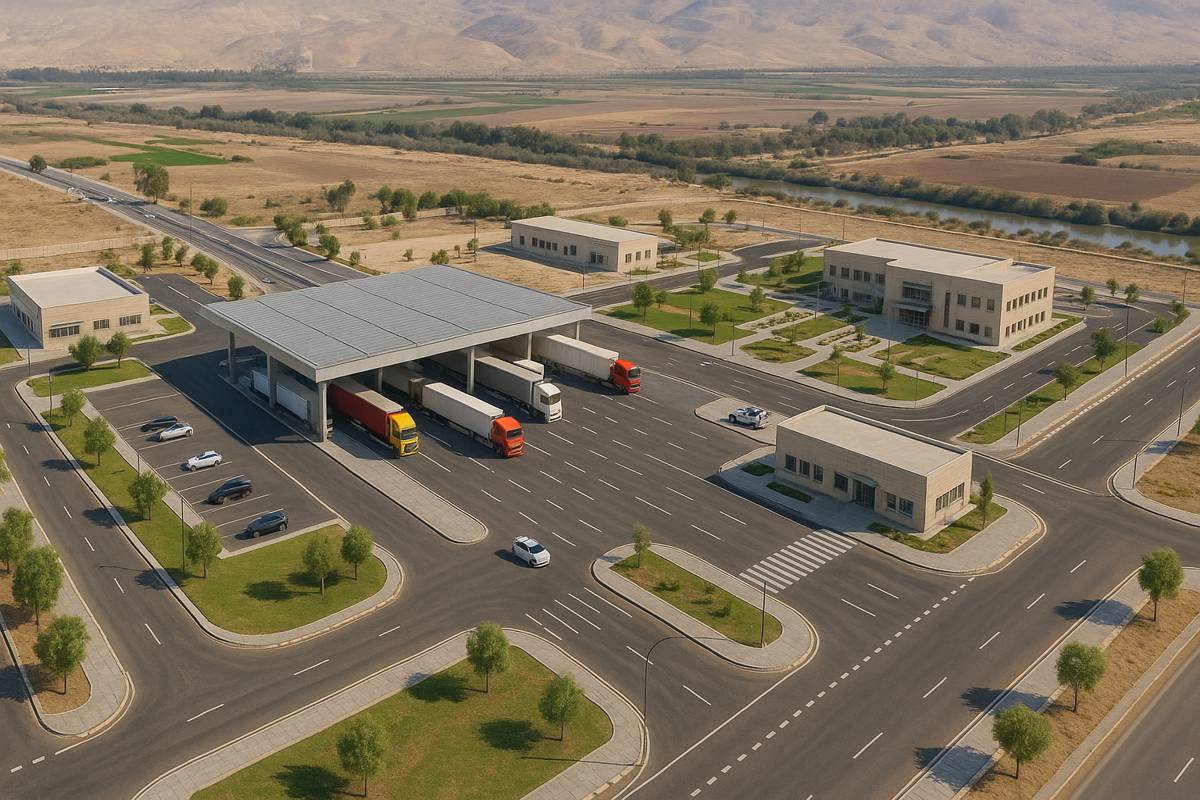Sichuan Highway helps Expressway Construction to connect Southwest China
Developing a Gateway to Economic Development
A key transportation project in China, the Sichuan Lexi Expressway serves as an important pathway to alleviate poverty and increase ecological tourism, driving local economic development.
With a total length of 151.8 kilometres and a connecting line of 40 kilometres, the megaproject runs through four counties and will connect to the planned expressway from Xichang to Zhaotong. Contractor Sichuan Highway Planning, Survey, Design and Research Institute has completed survey and designs of over 60,000 kilometres of roads, including 5,000 kilometres of expressways, so they were tasked with constructing the four-lane highway with a design speed of 80 kilometres per hour within a five-year period.
To complete the project, however, the team had to overcome the project’s complicated topography and geology. Over 80% of the roadway length consisted of bridges and tunnels. In fact, the project covered 746.68 hectares, with 137 bridges (42,773 meters), 41 tunnels (84,006.5 meters, six diverging interchanges, 71 culverts and pathways, four overpasses and aqueducts, and nine ramp toll stations.
Additionally, the project would run through “the gene bank of subtropical plants,” which include nature preserves and tree farms with rare and protected plants. The local climate is unstable, with about 270 rainy days in a year and up to three months of precipitation in the winter, making construction, transportation, and safe operation difficult.
Searching for an Advanced Method
Facing engineering and technical challenges, Sichuan Highway knew that traditional design and construction methods could not accommodate the project. A 40-kilometer section running through uninhabited land had no access roads, electricity supply, or communication facilities.
“People had to sleep outside in cold or heat, walk through uninhabited mountains and dense forests, and climb deep trenches and gullies filled with bogs,” said Jixing Dong, BIM engineer at Sichuan Highway Planning, Survey, Design and Research Institute Ltd. Additionally, the team comprised over 1,500 employees in varied disciplines, including over 40 experts that range from national and provincial engineering design masters and members working for the state’s council. These disciplines needed to contribute to and communicate on this already complex project.
Therefore, the team sought BIM and digital twin software that had a strong carrying capacity, wide discipline applicability and unified data format, and support secondary development to meet the above application requirements. They also wanted the application to help improve design quality and timeliness of later-stage service, raise professional and technical standards, and provide digital operation and maintenance to ensure standardized workflows and high data quality.
Improving Collaboration with BIM
Sichuan Highway conducted an in-depth analysis of several software products, including those from Autodesk, Catia, Weidi BIM, Hongye BIM, and Bentley Systems. They ultimately chose Bentley applications and, after reviewing all available products, chose the open modelling applications to establish a connected data environment, integrating and streamlining design and construction processes.
“For the Lexi Expressway project, a 151.8-kilometer highway digital twin model was created based on Bentley [applications], which provided high-quality engineering data to all parties involved in the project; improved the level of project management, design and construction; and produced good economic benefits and social benefits,” said Qiao Ke, director of BIM center at Sichuan Highway Planning, Survey, Design and Research Institute Ltd.
They began by using ContextCapture to collect data and develop a reality model. Because the topographic data of the project was from complex sources and in multiple formats, the team used Bentley applications to standardize multi-source surveying and mapping data. Using Bentley’s OpenBridge and OpenRoads applications, they developed models for all aspects of the project, including roads, tunnels, intersections, and traffic engineering. They also used MicroStation to ensure that all data was in the same format, guaranteeing first-class BIM data quality.
The applications’ automated features streamlined development, making it easy for everyone on the project to efficiently collaborate. Additionally, these models can be updated in real time for use during future operations and maintenance.
Helping Deliver a Complex Roadway Project
By using Bentley’s collaborative BIM and digital twin software, Sichuan Highway developed models for 234 bridges, 42 tunnels, 82 culverts, 33 relocated roads and ditches, and 36 spoil grounds. The team efficiently manages over 500,000 components and 5.73 million attributes.
The organization expects that using the applications will reduce project costs by CNY 20 million to CNY 30 million, improving data integration, standardization, and design accuracy; identifying more than 1,000 errors; and shortening the early stages of construction.
On track to be completed in July 2025, the Sichuan Lexi Expressway project will connect areas for improved economic development. The roadway plays an important role in the Sichuan’s network, serving as an important pathway for poverty alleviation and ecological tourism. Once completed and operational, it will effectively drive local economic development and create many local jobs.
Project Summary
- Organization: Sichuan Highway Planning, Survey, Design and Research Institute Ltd., Sichuan Lexi Expressway Co., Ltd.
- Solution: Roads and Highways
- Location: Leshan, Sichuan, China
Project Objectives
- To construct a 151.8-kilometre expressway that will alleviate poverty and increase ecological tourism in Sichuan, China.
- To develop a workflow that ensures high-quality design and standardization.
Project Playbook
- ContextCapture
- MicroStation
- OpenBridge Modeler
- OpenRoads Designer
- ProStructures
Fast Facts
- Sichuan Highway was tasked with constructing the four-lane highway with a design speed of 80 kilometres per hour within a five-year period.
- After an in-depth analysis of several options, they chose Bentley applications, integrating and streamlining design and construction processes.
- Using Bentley’s OpenBridge and OpenRoads applications, they developed models for all aspects of the project, including roads, tunnels, intersections, and traffic engineering.
ROI
- By using Bentley’s collaborative BIM and digital twin software, Sichuan Highway developed models for 234 bridges, 42 tunnels, and 33 relocated roads and ditches.
- The organization expects to reduce project costs by CNY 20 million to CNY 30 million.
- On track to be completed in July 2025, the Sichuan Lexi Expressway will connect areas for improved economic development.

Article by Meg Davis, Marketing Director for Roads at Bentley Systems.



















